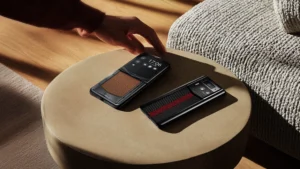You have watched smart phone brands change how people use tech in ten years. In 2015, Apple and Samsung were the top smart phone brands. Now, you see new brands and some old ones leaving. The table below shows big smart phone brands like LG, HTC, and BlackBerry exiting the market. Google joined the top smart phone brands in recent years.
| Year | Major Brands Exiting | Dominant Brands |
|---|---|---|
| 2015 | N/A | Apple, Samsung |
| 2018 | HTC, BlackBerry | Apple, Samsung |
| 2020 | LG | Apple, Samsung |
| 2022 | LG | Apple, Samsung |
| 2024 | Sony (decline) | Apple, Samsung, Google |

You get more choices and faster changes with new smart phones. This change gives you new features and better deals.
Key Takeaways
- There are more smartphones to pick from now than in 2015. You can choose from many features and prices. People still like to buy from brands they trust. You often buy from brands that work well for you. New brands like Huawei and Xiaomi have made phones cheaper. They also add cool new features. Phones now have better technology like 5G and longer battery life. These things make using your phone better. When you know what you want, brands make better phones for you. What you choose helps change the market.
Smartphone Market in 2015

Leading Smart Phone Brands
You saw the mobile phone industry change quickly in 2015. At that time, the smartphone market had a few big names. Apple and Samsung led the way. You also noticed brands like BlackBerry, LG, and Nokia. These brands tried to keep up, but they could not match the leaders. You found Samsung at the top with the largest market share. Apple followed closely. Huawei started to grow and entered the top three. The table below shows how much of the market each brand held in 2015.
| Brand | Market Share (%) |
|---|---|
| Samsung | 22.5 |
| Apple | 15.9 |
| Huawei | 7.3 |
You saw Samsung and Apple set the pace for new features and design. Other brands tried to compete, but many could not keep up with the fast changes in the industry.
User Expectations
You expected your smartphone to do more in 2015. Most people wanted a phone from a brand they liked. Many users already owned devices from the same brand and wanted to stay loyal. You cared about the operating system and wanted a phone that ran your favorite apps. Battery life and screen quality mattered to you, but not as much as brand loyalty. The table below shows what users looked for when buying smartphones.
| Consumer Expectation | Percentage |
|---|---|
| I like this brand | 49% |
| I already own devices from the same brand | 32% |
| It runs the operating system I like | 27% |
| Superior battery or screen | 20% |

You shaped the smartphone market with your choices. Your loyalty and your need for better features pushed the mobile phone industry to improve every year.
Evolution of Smartphones: Brand Shifts

Rise of New Smart Phone Brands
Since 2015, new smart phone brands have changed things. Chinese companies like Huawei, Xiaomi, and Oppo grew very fast. They used smart ways to get your attention:
- They used local celebrities in ads to make their phones popular.
- They sold good smartphones for less money to beat others.
- They focused on places where more people wanted smartphones.
These brands brought new features and styles. Phones became cheaper and you had more choices. This change is a big part of smartphone history.
Exit of Former Leaders
Some famous smart phone brands left the market. BlackBerry, LG, and Nokia were once leaders. They lost for a few reasons:
- Nokia worked with Microsoft and missed out on Android. You found fewer apps and less excitement.
- BlackBerry did not believe in touchscreen phones at first. You wanted easy phones, but BlackBerry cared more about security.
- LG’s share dropped to about two percent before leaving. LG shipped 23 million phones last year. Samsung shipped 256 million.
Here are some key moments that led to their fall:
- Nokia sold itself to Microsoft when both had problems. Sales dropped fast.
- BlackBerry released its new system too late. You had already picked other brands.
Smartphones changed fast and pushed these brands out. Their stories show how quickly things can change in smartphones.
Apple, Samsung, and Google
Apple and Samsung are still at the top. Google joined with its Pixel phones. These companies use different ways to stay ahead:
| Evidence | Explanation |
|---|---|
| Samsung's many products and foldable phones | Samsung keeps its lead by offering lots of choices. |
| Apple's slower new ideas | Apple has trouble meeting what you want. |
| More people buy mid-range and budget phones | You keep your phone longer and look for better deals. |
| Samsung stays number one | Samsung brings new ideas and many options. |
| Smaller changes in new phones | You see fewer big updates, so you upgrade less. |
These brands compete hard:
- Apple cares about design and how you use your phone. You get a smooth system that makes you want to stay.
- Samsung sells many types of phones for all budgets.
- Google aims at the mid-range with Pixel phones. You get long-lasting software and special features.
- Apple and Samsung have fought in court over patents. This has changed their plans.
You see these brands compete in stores and online. Their choices change what you can buy and how you use your phone every day.
Modern Smartphone Innovation
Design and Hardware Advances
Smartphone design has changed a lot since 2015. Brands work hard to make hardware better each year. You now see foldable screens in expensive phones. Flexible displays let you change the screen size. These new screens are also stronger. Battery technology keeps getting better. Fast charging helps your phone charge quickly. Solid-state batteries make your phone last longer. You use fingerprint sensors and face unlock for safety. These are called biometric security features. The table below lists big hardware changes:
| Advancement Type | Description |
|---|---|
| Foldable and Flexible Screens | Adjustable screen sizes and stronger displays. |
| Improvements in Battery Technology | Fast charging and longer battery life. |
| Biometric Security Improvements | Advanced sensors for safer portable mobile device use. |
| Enhanced AI and Machine Learning | Smarter digital assistants and personalized experiences. |
| Expansion of AR and VR | More immersive shopping and entertainment. |
You see new phones come out every year. The iPhone 15 and iPhone 16 have better chips. They also have longer battery life and better cameras. These features make your phone more useful and powerful.
Software and Ecosystems
You use apps on your smartphone every day. Since 2015, phones have faster and safer operating systems. Android and iOS give you millions of apps. You can use them for work, games, and learning. Developers keep adding new features to make apps better. Google Play and the App Store have apps for everything.
Apple’s ecosystem helps your devices work together. You use AirDrop and Handoff to move files and tasks. Over 2.2 billion Apple devices connect with each other. This shows people really like Apple products. Apple made $85.8 billion from services in Q3 2024.
“The Apple ecosystem is real and cross-selling works. It is the rare Apple customer who only owns a single Apple hardware device. With iPhone and to a lesser extent iPad as the entry point, Apple has succeeded in gaining device share among its customers.” – CIRP Survey
5G and New Technologies
5G gives you faster speeds on your smartphone. This makes shopping, gaming, and streaming better. You get quick service and smooth browsing. The table below shows how 5G helps you:
| Aspect | Impact |
|---|---|
| Mobile Commerce | Faster shopping and payments on mobile devices. |
| Conversion Rates | More purchases because pages load quickly. |
| Customer Satisfaction | Better service and browsing. |
| Immersive Shopping | AR and VR let you try products virtually. |
You also see new tech like AI, AR, and better cameras. OLED and AMOLED screens look brighter and clearer. You want longer battery life and better photos. Modern smartphones give you these features and more.
Strategies in the Smartphone Market
Pricing and Segmentation
Smartphone brands use prices to get different buyers. Some brands sell cheap phones for students and families. Other brands sell expensive phones for people who want new tech. Brands watch what you do and what you like. They use this information to make phones for your needs.
- Brands check your age and how you live.
- They use data to find groups with special needs.
- You get phones with features for your daily life.
When brands know you better, they make phones that fit you. This makes you want to buy their phones.
| Segmentation Factor | How Brands Use It |
|---|---|
| Age | Make phones for teens or seniors |
| Lifestyle | Give phones for work, play, or fitness |
| Usage Habits | Add features for gaming, photos, or social media |
Global Expansion
Smartphone brands go to new countries every year. Xiaomi sells phones online, so prices are lower. Huawei spends money on research and brings new tech to more places. BBK Electronics uses ads and fast updates to get buyers everywhere. These brands focus on places where more people want smartphones.
- Xiaomi sells online and keeps prices low.
- Huawei is a leader in AI and 5G.
- BBK Electronics grows fast with Oppo and Vivo.
You get more choices and better prices as brands compete around the world.
Marketing Approaches
Smartphone brands change how they talk to you. Since 2015, privacy became important in ads. Brands protect your data and show how they keep it safe. Samsung talks about new features and how its phones help you. Apple asks you to share photos in the “Shot on iPhone” campaign. This helps you feel part of a group.
- Brands care about privacy and your rights.
- Samsung shows how its phones help your life.
- Apple uses social media to connect with you.
Your choices change the smartphone industry. Brands listen to you and change ads to earn your trust.
User Impact of the Evolution of Smartphones
Consumer Choice
You have more smartphone choices now than before. Since 2015, many new brands and models have come out. You can pick from lots of features, prices, and styles. Things like your habits and even if you are a boy or girl can change what phone you want. A study says these things affect almost half of your choices. You can buy cheap phones or expensive ones. This means you can find a phone that fits your needs and your money.
- Every year, you see more brands and models.
- You can choose phones for games, photos, or work.
- There are phones for all ages and lifestyles.
Changing Expectations
You want more from your smartphone now. In 2020, people bought about 1.5 billion smartphones. You want your phone to be faster and last longer. You also want better cameras. Many people look for cool features like AI tools and fast chips. You want your phone to do more than just call or text. Superphones like the Google Pixel 9 Pro XL and iPhone 15 Pro Max give you top features. These phones show that your needs make brands build smarter and stronger devices.
You want your phone to keep up with your busy life. Brands listen and add new things every year.
| Evidence Description | Year | Change Observed |
|---|---|---|
| People upgrade sooner for AI features | 2024 | More interest in new technology |
| Spending on devices dropped slightly | 2024 | Recovery trend, growth ahead |
| Tech affordability means fewer delays in buying | 2024 | Positive shift in spending priorities |
Brand Loyalty
Brand loyalty is still important for smartphone users. You trust brands that have a good name and nice design. Price, ads, and how a brand looks also matter. The table below shows what makes you stay with your favorite brands:
| Factor | Influence on Brand Loyalty |
|---|---|
| Brand Reputation | Strong correlation |
| Brand Competence | Most critical factor |
| Price | Strong correlation |
| Advertising | Strong correlation |
| Brand Image | Strong correlation |
| Design | Strong correlation |
- You feel happy when your phone works well.
- You stick with brands you like because you feel close to them.
- You trust brands that give you a smooth experience on all your devices.
Your choices and loyalty help shape the future of smartphone brands. You help pick what features and styles will come next.
In the last ten years, smartphones changed a lot.
- Asia Pacific now has the biggest share, over 40%. North America and Europe are growing, but not as fast.
- Almost half of all people now have smartphones.
- People buy phones online more because they have more money.
| Key Findings | Implications for Competition and User Experience |
|---|---|
| Vertical and horizontal innovations shaped the decade. | You get more choices and better features. |
| No single design dominates. | You can pick from many styles and functions. |
| More brands entered this decade. | Competition gives you better value. |
Experts think the next ten years will be even better. Premium smartphones will have smart generative AI. You will get new features and smarter phones. Each decade brings more cool changes.
FAQ
What makes a smartphone brand popular today?
You look for brands that offer new features, good prices, and strong design. Many people also choose brands with easy-to-use software and fast updates. Popular brands listen to what you want and improve their phones every year.
Why did some famous brands leave the smartphone market?
You saw brands like BlackBerry and LG leave because they did not keep up with new technology. They missed trends like touchscreens and strong app stores. Other brands offered better features and lower prices, so you switched.
How does 5G change your smartphone experience?
You get faster internet speeds with 5G. Videos load quickly, and games run smoothly. You can shop online and use new apps that need fast connections. 5G helps you do more on your phone without waiting.
What should you look for when buying a new smartphone?
You should check battery life, camera quality, and software updates. Look for phones that fit your budget and needs. Try to pick a brand with good customer support and strong security features.
Do you need to upgrade your smartphone every year?
You do not need to upgrade every year. Many phones last for several years. You can wait until your phone slows down or stops getting updates. Upgrading makes sense when you want new features or better performance.








